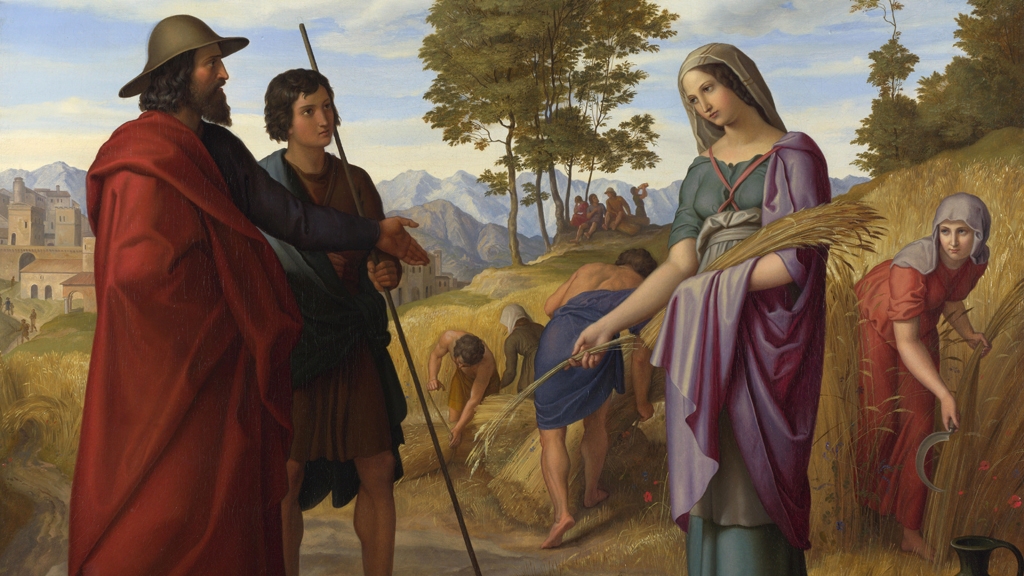In traditional settings, the Book of Ruth is read on the second day of . The book is about a Moabite woman who, after her husband dies, follows her Israelite mother-in-law, Naomi, into the Jewish people with the famous words “whither you go, I will go, wherever you lodge, I will lodge, your people will be my people, and your God will be my God.” She asserts the right of the poor to glean the leftovers of the barley harvest, breaks the normal rules of behavior to confront her kinsman Boaz, is redeemed by him for marriage, and becomes the ancestor of King David.
Read the full text of the Book of Ruth in Hebrew and English on Sefaria.
The custom of doing this is already mentioned in the Talmudic tractate of Soferim (14:16), and the fact that the first chapter of the Midrash of Ruth deals with the giving of the is evidence that this custom was already well established by the time this was compiled. [Tractate Soferim is one of the latest books of the Talmud, probably dating no earlier than the eighth century.]
There are many explanations given for the reading of Ruth on Shavuot. The most quoted reason is that Ruth’s coming to Israel took place around the time of Shavuot, and her acceptance into the Jewish faith was analogous of the acceptance of the Jewish people of God’s Torah.

Help us keep Jewish knowledge accessible to millions of people around the world.
Your donation to My Jewish Learning fuels endless journeys of Jewish discovery. With your help, My Jewish Learning can continue to provide nonstop opportunities for learning, connection and growth.
A second explanation relates to genealogy. Since the Book of Ruth ends with the genealogy of David, whose forbearer Ruth was, it has been suggested that it is read on Shavuot because there is a legend that David died on Shavuot.
Another reason for the reading of Ruth on Shavuot is that its story takes place at harvest time, and Shavuot also occurs at the time of the spring harvest.
Excerpted with permission from Every Person’s Guide to Shavuot (Jason Aronson, Inc).



